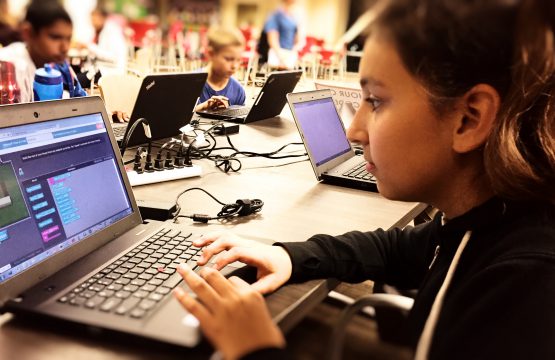Build your personal brand with a great LinkedIn profile
A few weeks ago during Winter Workshop at the TGR Learning Lab I had the privilege to speak to a couple dozen Earl Woods Scholars about the importance of LinkedIn. My main goal was to inform them how critical it is to build their personal brand on the platform, especially since 94 percent of recruiters actively vet candidates on LinkedIn.
While I was pleased with engaging with those students, I immediately thought about individuals who did not receive the message. Other scholars. Alumni. The variety of underserved students not affiliated with the Tiger Woods Foundation that we still hope to reach. It is that lack of fulfillment that made me eager to write on our newsfeed about LinkedIn. So if you are a college student, recent graduate or one of our scholars who missed out on the sessions, let’s explore what you can do today to differentiate yourself on the world’s largest professional networking site.
Establish your summary
One of the first things an observer notices on a LinkedIn profile is the summary section. I would advise you to open a word-processing system such as Microsoft Office if you’re a PC owner or Pages if you’re a Mac user. Taking this step gives you the opportunity to jot down notes and test out different summary structures. This route also decreases the likeliness of spelling and grammar errors being made on LinkedIn since word processors are more adept in uncovering mistakes than tools from platforms. Here are some tips to consider with the summary section:
- Refer to your resume to identify important skills you want to highlight in your summary.
- Include action words, keywords, brands and quantities.
- Remember LinkedIn allows a maximum of 2,000 words for the profile section.
Boost your profile with visual assets
A huge way to take your LinkedIn profile to another level is by making it visually alluring. The majority of people skim content they read online and studies suggest the average person gets distracted in eight seconds, though a mere 2.8 seconds is enough to distract some people. In order to catch the eye of a recruiter or hiring manager in such a short amount of time, I recommend adding at least two visual assets to your summary profile and your most recent/current position. Any of the examples below will suffice.
- Presentation
- Report
- Video
- PDF of resume
- Photo of honors/certificates
- Letters of recommendation
Upload your headshot and lead with an engaging headline
Another enormous element on LinkedIn are headshots and headlines. Some folks are reluctant to upload a headshot and want to keep some level of anonymity. I’m here to say in today’s digital world being the invisible man or woman is not possible and can be to your detriment. Once your photo apprehension passes, you’ll want to ensure you choose a headshot that exhibits professional attire and has no off-putting background. I suggest going with an image with you smiling. Headshots with a smile convey a friendlier person than those without a smile.
Now for the headline aspect. If you are an intern or employee, your headline by default will display as your position at the company you are affiliated with. Boringggggggg. Right? We are more than our title. Akin to your summary section consider your target audience, keywords, experience level and the message you want to convey to talent acquisition people. Here are a few headline examples, which display more than the position at their organization:
- Recent MBA graduate seeking opportunities in finance | XXXXX@gmail.com
- Front-end developer with a passion for UX seeking opportunities in the Bay Area
- Green technologies expert | Online community manager | XXXXX@gmail.com
- Dean’s List student seeking engineering internships in Los Angeles
List relevant jobs and internships
The experience section will require you to fill out information for each job or internship you put on LinkedIn. Job title, company name, start and end dates (month + year), a description and media (company video, case study, project you’ve completed, etc.) needs to be included. While this section appears very straightforward, I want to remind you of a few significant things. First, recruiters will cross-reference your resume with your LinkedIn profile. Any mismatches will almost certainly disqualify you as a candidate. Next, as you enter your positions, double-check that you are linking the position with the organization’s LinkedIn company page. When your audience sees logos of organizations on your profile, it builds credibility.
List your educational experiences
The educational experiences section on LinkedIn is where you enter the university you attend(ed). Following the same blueprint as the summary and experiences areas, you’ll want to inform your audience that you are more than a student that solely goes to class. If you achieved some kind of honor, list it. Additionally, include your field of study, activities and clubs. If your grades are good, include it in the appropriate format (e.g. 3.85/4.0).

Add skills
The skills and endorsements area on LinkedIn impacts algorithm rankings and search placement when recruiters and hiring managers search for candidates in your field. Similar to Google, Facebook and other online channels LinkedIn has a huge search engine results component. Before you start adding skills, please be aware that you can add a max of 50 skills. It might be helpful to look at job descriptions to pinpoint the most desired skills that you possess. From there start adding skills. Selecting the right skills can make or break how recruiters perceive your experience level because of the weight the variable has in LinkedIn’s algorithm.
Bonus tips
- Monitor the LinkedIn profile strength meter.
(5) All-Star
(4) Expert
(3) Advanced
(2) Intermediate
(1) Beginner
- Publish posts on LinkedIn.
- Brand your profile with a background picture (PNG, JPG, or GIF) with a resolution of 1400×425.
- Get at least one recommendation for each position you have and school you attend.
- Find and join groups.
Now that you are armed with tips and hacks for LinkedIn, are you ready to start building your brand? Connect with me on LinkedIn to let me know. As one of my favorite marketers Tim Ferriss says, “Personal branding is about managing your name — even if you don’t own a business — in a world of misinformation, disinformation and semi-permanent Google records. Going on a date? Chances are that your ‘blind’ date has Googled your name. Going to a job interview? Ditto.”
Champions of the unexpected.


